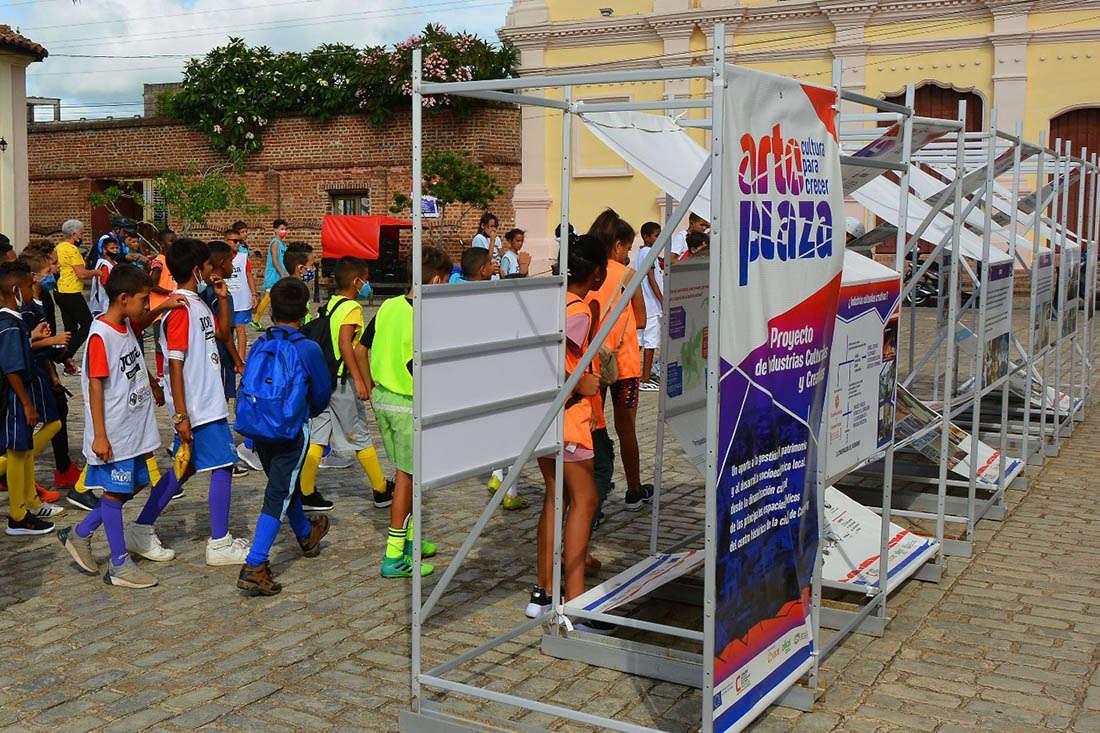Nowadays, the cultural and creative industries constitute a viable alternative for the management of heritage sites and thus have demonstrated national and international experiences. They have become the driving force behind local socio-economic development, while at the same time defending the determining role of culture as a means of preserving the identity of cities and contributing to the enhancement and safeguarding of historical cultural heritage.
The creative economy has shown surprising growth in the last two or three decades, and its economic impact has been decisive in many localities, territories and countries, not only developed, but also underdeveloped for the creation of successful urban strategies. It is still considered a new and complex issue since there are multiple interpretations about what can be understood as creative economy, the activities that make it up and the economic, political and social implications that it can have.
An experience from and for Camagüey
The Office of the Historian of Camagüey City (OHCC), as the leading entity for the conservation and management of the historic center of Camagüey, decided to incorporate these creative industries approaches into its development policies and land management plan.
Thus arises the international cooperation project “Creative Industries: a contribution to heritage management and local socioeconomic development from the cultural revitalization of the main public spaces of the historic center of Camagüey”, also known as Arte Plaza; project financed by the European Union and the Camoes Institute of Portugal, which is developed jointly with the CARE-OIKOS International Consortium and the execution of the OHCC, with a duration of 24 months.
Arte Plaza has as its radius of action the main squares, small squares and connecting axes of the historic center, particularly in the area declared Cultural Heritage of Humanity by UNESCO; spaces with great potential for the insertion of the model of creative industries and the conformation of the Creative Cultural Circuit of Camagüey.
Purposes
The fundamental objective of the project is its contribution to the revitalization of Camagüey’s cultural life as a promoter of local socio-economic development, with the enhancement of its cultural heritage.
To this end, it is specifically proposed to strengthen the capacities of cultural, economic and local population agents, with a view to achieving inclusive and articulated management of the historic center.
The actions seek to optimize the heritage values of the Historic Center, based on the increase of local knowledge for an inclusive and articulated management of the territory, with the incorporation of these concepts in management policies and instruments; in addition to demonstrating how to do it in practice and reflect on its results.
To achieve the above, the work has been divided into three fundamental directions:
(1) A theoretical-practical training program for decision-makers and specialists from the OHCC, who at the end of the process would incorporate the model of creative industries in the instruments of asset management.
(2) A practical process of creating creative industries around public spaces with high heritage value, where the resident population, cultural and economic agents, public and private, are integrated into cultural and creative projects in public spaces of the historic center of Camagüey; and
(3) A process that makes it easier to understand the opportunities and challenges offered by the creative industries model for the inclusive management of a territory’s heritage, the results of which will serve to influence cultural policies, within the Network of Historian and Conservator ‘s Offices and the and in other non-patrimonial spaces.
Objectives
The project bets, from the cultural point of view, on the creation of both spiritual and economic wealth, which can not only be reversed in the individual or family sphere; but that they transcend domestic spaces to become social benefits, based on the sustainability of heritage and common well-being.
Translated by: Aileen Álvarez García






